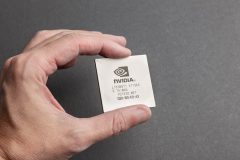Today we’re launching a redesign featuring new sections across ReadWrite. It’s the most sweeping editorial change I’ve made since I joined ReadWrite more than two years ago. Here’s why I’m doing it: It all has to do with ReadWrite’s past—and its future.
Moving On From The Web—To The World
ReadWrite was founded 12 years ago on the premise that the Web was becoming a two-way, readable and writable system. While the fight for the open Web continues, the vision of the Web that our founder, Richard MacManus, foresaw has largely been fulfilled.
That’s left ReadWrite with an interesting challenge: What do we cover next?
The answer is all around us. The Web has become the world. What was largely a software phenomenon has turned into physical hardware. Increasingly, innovation happens in three dimensions rather than on a flat screen. Think of drones, virtual reality, and 3D printing—all developments ReadWrite has covered.
That coverage will continue in ReadWrite’s new life, but with a sharper focus on the things that matter to our readers. That audience, we believe, is made up of makers and founders: people who want to create new products and companies around those products, so they can take them to market and reach the masses. Increasingly, we believe those audiences overlap, as people move fluidly from one category to another.

For makers, we have four new sections:
- Code is all about software—how to write code, and the possibilities that unfold with it.
- Build is about hardware, from design and prototype to manufacturing.
- Structure tells you how to store, manipulate, and analyze data.
- Connect tells you how to link devices and transmit information, on networks both local and wide in area.
For founders, we offer another four sections:
- Lead tells you how to form a company, recruit a team, and inspire employees.
- Fund tells you how to finance innovation, with an emphasis on nontraditional means like crowdfunding and crowd equity.
- Operate helps you run a business at the speed of tech.
- Grow tells you how to reach new customers, new markets, and new partners.
Some of my favorite old sections of ReadWrite were what I called “the verbs”: ReadWriteHack, ReadWriteStart. They explicitly promised to tell you what you could do with technology. Think of the new sections as outgrowths of those beginnings.
You’ll see far less quotidian news of the tech world on ReadWrite. The mobile and social revolutions have largely run their course; while people will still reap the rewards of those innovations, the opportunities are fewer and less interesting. It’s much less likely now to envision a future into which you might write yourself as the heroic creator of new technology.
What “Read” And “Write” Mean To Us, And To You
A few months ago, I speculated about crowdfunding ReadWrite. We actually got pretty far down that road, even started organizing a campaign. Then last week, Redg Snodgrass, the CEO of ReadWrite and Wearable World, and I decided to put the campaign on hold.
We remain intrigued by the idea of reader-backed journalism, and it could be the right model for ReadWrite in the long term. Listening to you prompted us to ask ourselves questions about what we wanted to build ReadWrite into, and we needed to answer those before we contemplated crowdfunding.
For us, it was an exploration into what “read” and “write” truly mean in today’s world. They’re so much more than letters typed on a keyboard.
The literal interpretation some offered for those words was about communication and conversation. We’re all for those things, and always have been: ReadWrite has consistently covered the Web’s growth as a place for self-publishing and self-expression.
Anyone who’s familiar with computing systems, though, knows that “read” and “write” also refer to the ability to access and alter information. And that leads us to a far more sweep vision for ReadWrite.
ReadWrite will help you read the present state of technology—and write the future of it.
The read/write questions of today, now that the Web has become the world are these: Can you identify the current state of the world? Can you change it?
The real meaning of “read” and “write” goes beyond talk to learning and action. In that vein, we will help you read the present state of technology—and write the future of it.
We’ll also feature new voices offering surprising ideas and timeless advice. In the spirit of ReadWrite, we also have a place here for you to contribute and join the conversation. (If you have a submission, drop us a line.)
We’re changing ReadWrite for you, as well as with you. This is an important step in our evolution, and we’re excited about it. We hope you are too.

















